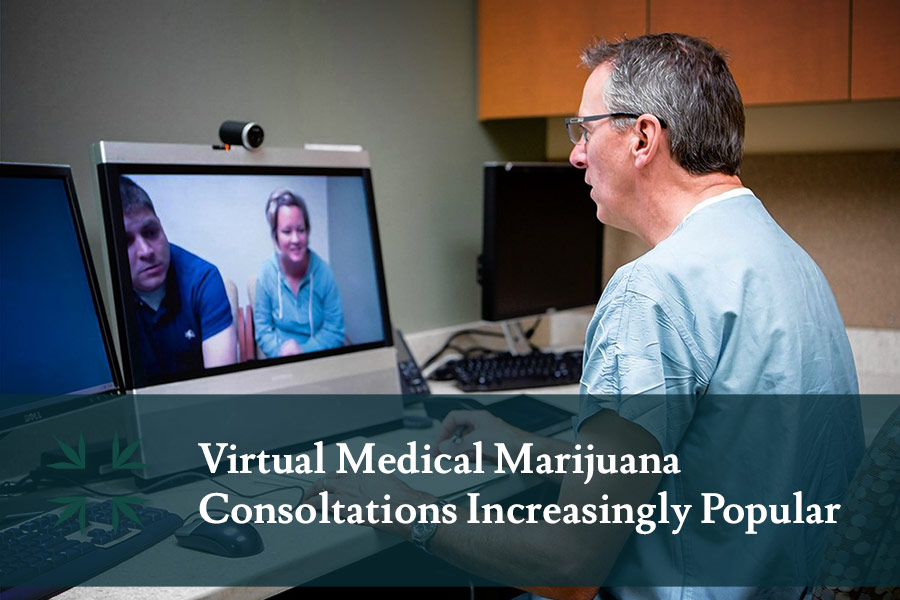The recent growth in telemedicine services across the healthcare industry is also making inroads into medical marijuana programs.
Telemedicine, otherwise known as virtual health, is the use of telecommunications technology to provide remote diagnosis and treatment of a patient. While still in its infancy, the technology is increasingly being applied to the growing medical marijuana industry.
And it’s not hard to see why. Obtaining a medical marijuana card online following a virtual doctor’s appointment can save a lot of time and money. For those seeking relief from chronic pain, consulting with a physician virtually can help them avoid aggravating their symptoms.
Oklahoma is one example of a state where telemedicine for medical marijuana services is seeing significant growth. One of the state’s leading telemedicine companies is PrestoDoctor, which also offers virtual medical marijuana consultations in California, Nevada, New York, and Missouri. They help arrange remote visits between patients looking to obtain medical marijuana cards for their health problems and licensed physicians qualified to provide them.
PrestoDoctor CEO Kyle Powers reports that such visits have recently surged in popularity in Oklahoma.
“Every month there are just more and more people,” Powers said. “I think more and more people are finding out about the program.”
“Everyone these days is too busy to take two hours out of your day to sit in a doctor’s office. It’s not very convenient when you can just do the appointment at home,” he added.
PrestoDoctor employs 15 to 20 licensed physicians in Oklahoma, who see more than 100 patients a day remotely. But what do these virtual visits actually entail?
Well, more or less, what a physical visit would. Typically, patients must submit their relevant medical records prior to the appointment. Patients then speak with their physician via video chat about their symptoms, and the physician makes a recommendation.
But there are some within the medical marijuana industry who are concerned about how telemedicine services are operating. And some states have taken action to ensure that telemedicine is not used for medical marijuana consultations.
Colorado, the second state to legalize medical marijuana, does not permit telemedicine for those seeking medical marijuana services. The state of Washington also requires an in-person visit in order to prescribe medical marijuana.
At the other end of the spectrum, California is perhaps the most lenient when it comes to telemedicine and medical cannabis. Not only can physicians prescribe medical marijuana to those with a qualifying card, but they can also establish whether a patient suffers from a condition suitable for medical marijuana treatment.
Some fear that if afforded too much leeway, telemedicine companies could take advantage to the detriment of patient care.
The Register-Herald reports there are huge disparities in fees charged by telemedicine companies. Some doctors also complain that standards in filing patient paperwork and in delivering patient care can vary wildly. Telemedicine patients have been left waiting for their medical marijuana cards for weeks without explanation.
Others see a more fundamental problem with virtual healthcare compared to direct patient-physician interaction.
“I would prefer to see [the service] come up through clinics rather than individual physicians who are just trying to make a quick buck,” said Chip Paul, who helped get medical marijuana legal in Oklahoma. “The doctor-patient relationship is very important in our law [and] to me.”

Leave A Comment